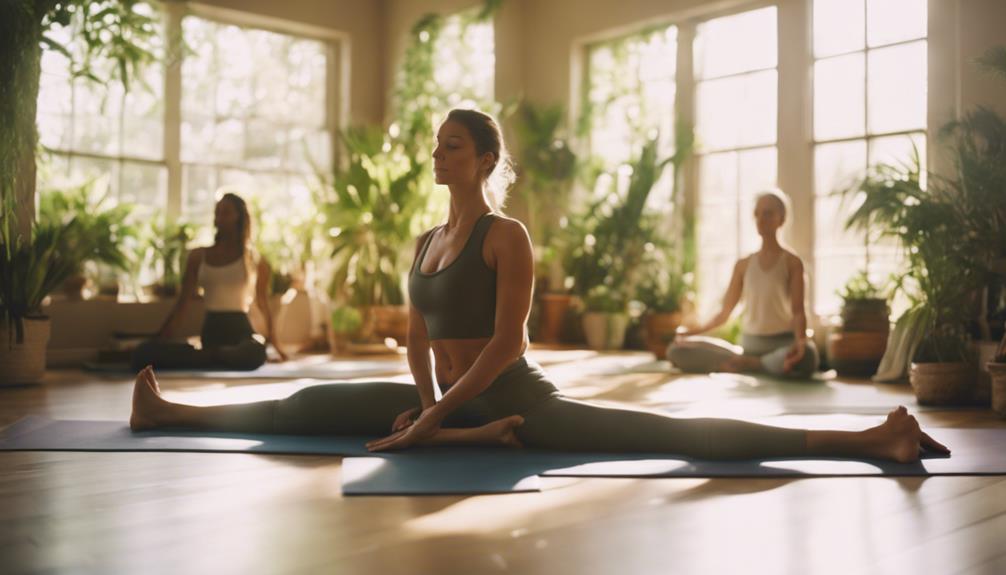What Are The Yoga Poses

Yoga is a holistic practice that combines physical, mental, and spiritual elements to promote overall well-being. Among the various aspects of yoga, understanding the different yoga poses is fundamental for anyone looking to incorporate this ancient discipline into their lifestyle. In this article, we will delve into the most popular yoga poses, their benefits, and how they can enhance your yoga practice.
What Are Yoga Poses? A Brief Overview
Yoga poses, also known as asanas, are specific physical postures that are designed to improve flexibility, strength, balance, and mental focus. The practice of yoga is rooted in ancient Indian philosophy, and each pose has its own significance and benefits. Asanas can range from simple stretches to complex positions that require considerable strength and balance. Understanding what these poses entail is crucial for both beginners and experienced practitioners alike.
The Importance of Proper Alignment in Yoga Poses
When practicing yoga, proper alignment in each pose is essential to avoid injuries and maximize the benefits of the practice. Each asana has specific alignment guidelines that help the body maintain balance and stability. For instance, in poses like Downward Dog (Adho Mukha Svanasana), it’s important to keep your spine straight and your heels reaching towards the ground. Misalignment can lead to strain or injury, so beginners should focus on learning the correct form, possibly with the guidance of a qualified instructor, to ensure they practice safely and effectively.
Popular Yoga Poses and Their Benefits
There are numerous yoga poses, each with unique benefits. Here are some of the most popular asanas and their advantages:
Related Posts:
1. Mountain Pose (Tadasana): This foundational pose promotes good posture and grounding. It helps to improve focus and balance.
2. Warrior I (Virabhadrasana I): A powerful pose that builds strength in the legs and opens the hips and chest.
3. Tree Pose (Vrksasana): This balancing pose enhances stability and concentration while strengthening the legs.
4. Child’s Pose (Balasana): A restorative pose that provides relaxation and relief from tension.
5. Cobra Pose (Bhujangasana): This backbend strengthens the spine and opens the chest, helping to alleviate stress and fatigue.
6. Bridge Pose (Setu Bandhasana): A great pose for strengthening the back and improving flexibility in the spine and hips.
By incorporating these yoga poses into your routine, you can experience a variety of physical and mental benefits that contribute to overall wellness.
How to Get Started with Yoga Poses at Home
If you’re new to yoga, starting your practice at home can be both convenient and rewarding. To begin, find a quiet space where you can focus. You’ll need a yoga mat for comfort and stability. Start with a few basic poses like Mountain Pose, Downward Dog, and Child’s Pose. Focus on your breath as you move into each asana, allowing your body to relax and open up. Consider following online tutorials or apps that guide you through sequences, ensuring you learn the correct technique and progressively build your practice.
The Role of Breath in Yoga Poses
Breath plays a vital role in yoga practice, especially when executing poses. Pranayama, or breath control, is an essential aspect of yoga that enhances both physical and mental benefits. Deep, mindful breathing helps to oxygenate the body, reduces stress, and promotes mental clarity. As you move through different yoga poses, synchronize your breath with your movements. For example, inhale as you lift into a pose and exhale as you lower or transition. This practice not only deepens your connection to the asanas but also helps cultivate a sense of peace and mindfulness.
Common Mistakes to Avoid When Practicing Yoga Poses
Many beginners make common mistakes that can hinder their progress and lead to injuries. One such mistake is overstretching, which can result in muscle strains. Always listen to your body and respect its limits. Another common error is neglecting the importance of alignment, which can compromise the effectiveness of the pose. Additionally, rushing through poses without focusing on breath can diminish the meditative aspect of yoga. Take your time, focus on quality over quantity, and allow yourself to grow and develop your practice gradually.
Enhancing Your Yoga Practice with Props
Using props can greatly enhance your experience with yoga poses, especially for beginners or those with limited flexibility. Props like yoga blocks, straps, and bolsters provide support and stability, allowing you to achieve the correct alignment without strain. For example, using a block under your hand in Triangle Pose can help you maintain proper alignment without compromising your form. Incorporating props not only makes poses more accessible but also deepens your understanding of the asanas and their benefits, making your practice more enriching.
The Journey of Mastering Yoga Poses
Mastering yoga poses is a journey that requires patience, dedication, and practice. As you continue to explore different asanas, you may find that your body becomes stronger and more flexible, and your mind becomes more focused and calm. Remember that yoga is not about perfection; it’s about the process and the personal growth that comes with it. Celebrate your progress, no matter how small, and remain open to learning and evolving your practice over time. Engaging with the yoga community, whether through classes or online forums, can also provide support and inspiration along your journey.
In conclusion, understanding yoga poses is fundamental to developing a successful yoga practice. By focusing on proper alignment, breath, and personal growth, you can reap the numerous benefits that yoga has to offer. Whether you’re a beginner or looking to deepen your practice, embracing the journey of yoga will undoubtedly enhance your well-being. So roll out your mat, breathe deeply, and enjoy the transformative power of yoga!How To Practice YogaWhen Yoga Was InventedWho Owns Corepower Yoga